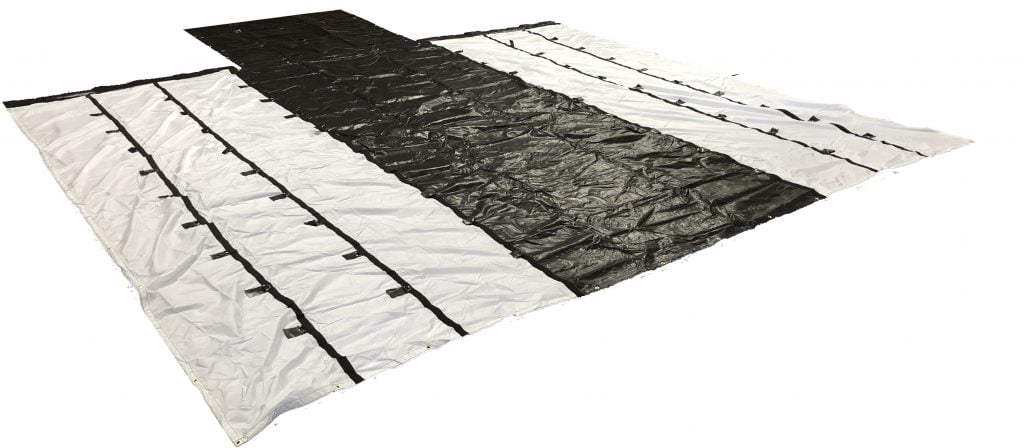The rip stop nylon fabric used to make parachutes is a great material for truck tarps. It is just amazing that it took so long for tarp manufacturers to figure it out. But that’s a different topic for a different post. We want to use this post to discuss the necessity of using edge protectors with parachute fabric tarps.

Since parachute fabric is quite durable, there is a tendency to treat it differently. Smart truck drivers know their parachute fabric tarps need just as much care as their vinyl counterparts. As such, the proper care of parachute fabric includes using edge protectors whenever necessary.
Here are three reasons to use edge protectors despite the extra strength and durability of rip stop nylon fabric:
1. Rip Stop Does Not Mean Rip Proof
One of the distinguishing characteristics of parachute fabric is that it is classified as ripstop fabric. Whether a parachute is made of nylon, canvas, or some other material, its ripstop designation comes from its cross-weave pattern that prevents rips and tears from growing. The last thing you would want as you are falling through the sky is to have a small rip become a huge, gaping hole.

The thing to understand here is that ripstop fabric is not rip proof. If you are not sure that this is true, get yourself a piece of scrap material, lay it on top of a cardboard box, and see if you can put your utility knife through the center of it. Trust us when we say you’ll succeed.
The point we are trying to illustrate here is that using edge protectors with parachute tarps still helps prevent rips and tears that could occur when tarp material comes in contact with sharp edges. The possibility of such rips and tears isn’t diminished simply because a tarp is made of parachute fabric.
2. Fragile Cargo is Still Fragile
Sometimes truckers are forced to use edge protectors in order to protect the cargo underneath their tarps. In other words, you do not want fragile pieces of cargo rattling around and bumping into one another. So you secure each piece as tightly as you can and then use edge protectors as an extra insurance policy.
Choosing parachute fabric tarps over regular nylon has no effect on the tendency of cargo to rattle around. So use edge protectors to keep individual pieces from damage during transit. Your customers will be happy on the other end.
3. Webbing Straps are Still Vulnerable
Another important reason for using edge protectors with standard vinyl tarps is the fact that sharp edges can wear away webbing strap material – even if said edges actually pierce the tarp material. This is an even bigger problem when you are dealing with parachute fabric, given that it is lighter and thinner than standard vinyl.
Wherever there is likely to be friction between webbing straps and cargo, you should consider using an edge protector – even if there’s tarp material between cargo and strap. An edge protector mitigates friction and reduces the likelihood of a strap being cut. As an added bonus, the edge protector will also help keep your tarp in place to some extent. Here you can also get an idea how to use edge protector or edge guard with v shaped extension handle. Please check out the video below;
As you can see, truck tarps made of parachute fabric are not perfect or indestructible. They certainly do have some benefits over traditional vinyl tarps in terms of weight and durability, but they are prone to the same kinds of things that damage vinyl tarps. So do yourself a favor and protect your investment. Use edge protectors with parachute fabric tarps in the same way you would with canvas or vinyl.












